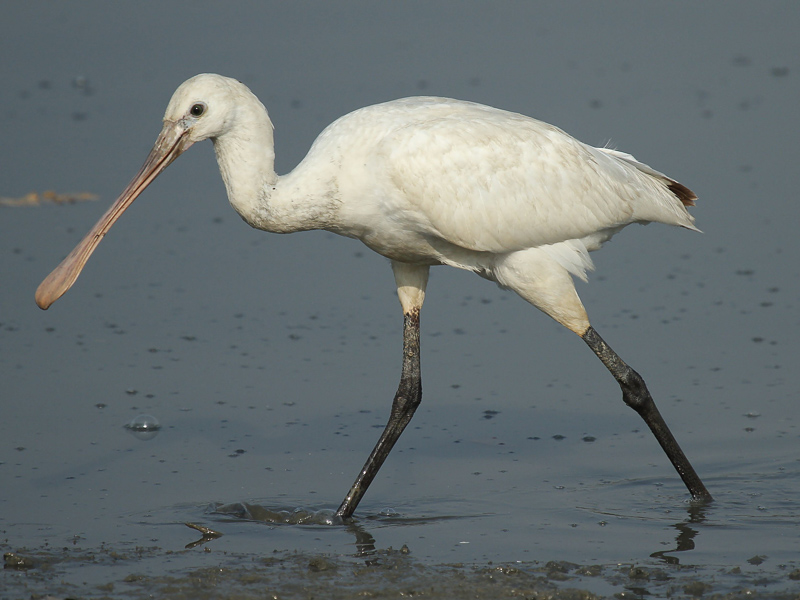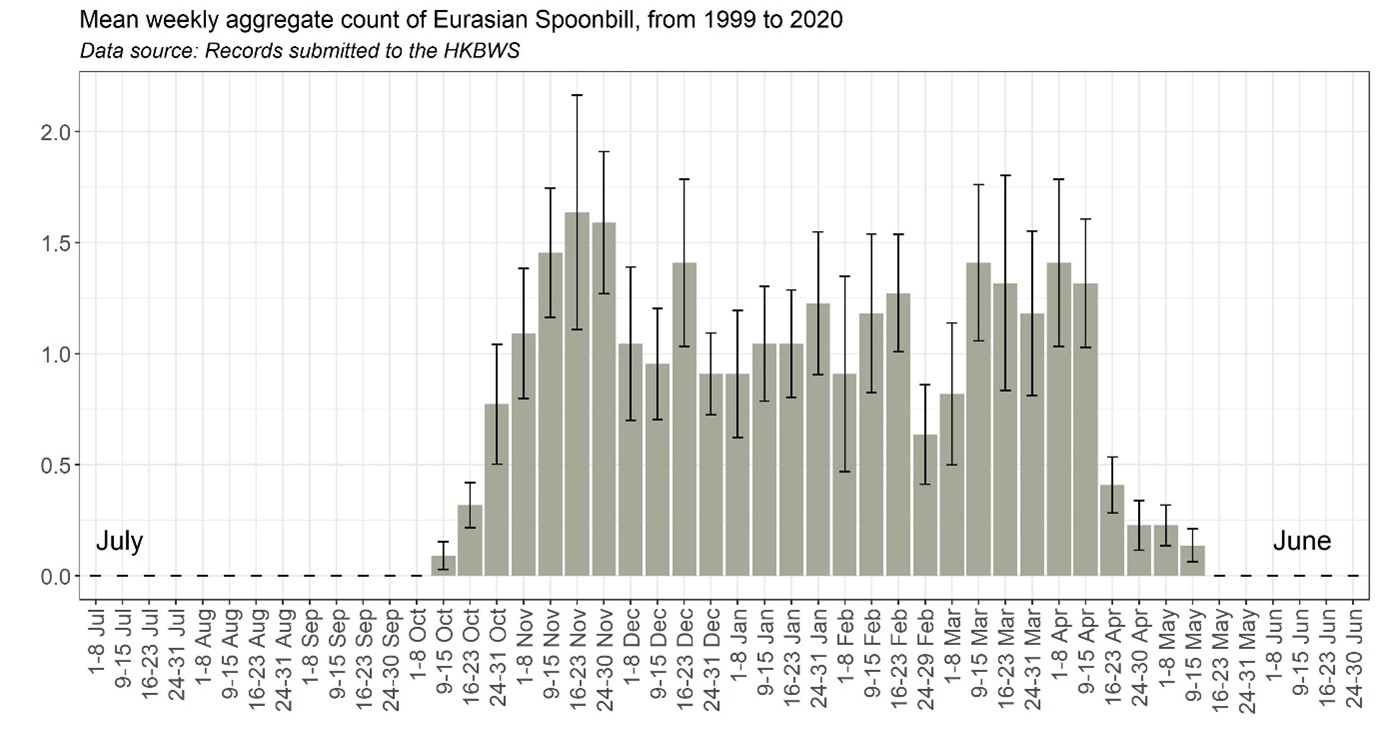Eurasian Spoonbill Platalea leucorodia 白琵鷺
Category I. Regular winter visitor in small numbers to Deep Bay area wetlands. Has probably declined since mid-1990s.
IDENTIFICATION

Nov. 2006, CHUNG Yun Tak.
70-95 cm. Large all-white waterbird with long legs, long spatulate bill and distinctive foraging action involving sweeping bill side to side in the water. Distinguished from Black-faced Spoonbill by lack of black around bill base, creamier tone to plumage and paler, pinker bill.

Mar. 2024, Paul Leader. Black-faced (upper) and Eurasian (lower) Spoonbills.
Flies with neck extended on shallow wingbeats interspersed with short glides. Compared to Black-faced Spoonbill, may appear larger in the body and feet, and longer in the bill, neck and legs.
VOCALISATIONS
Silent.
DISTRIBUTION & HABITAT PREFERENCE
All records of Eurasian Spoonbill are from the Deep Bay area, primarily in shallow ponds and gei wai at Mai Po NR; it also occurs in commercial fish ponds that are in the process of being drained and the larger river channels of the Shenzhen and Kam Tin rivers.
OCCURRENCE
First identified in Hong Kong in 1975 among the wintering flock of Black-faced Spoonbills (Viney 1976), Eurasian Spoonbill almost certainly occurred here prior to that, as it has occurred in all winters since, largely between the last week of October and the middle of April (Figure 1). Some passage is possibly evident in the second half of November. Extreme dates are 12 October 2014 and 18 May 1986.
The numbers recorded appear to have declined since the mid-1990s, prior to when the highest counts were 14 or more in six of the 20 winter periods; in contrast, since then the highest count has been seven despite much increased observer activity.
BEHAVIOUR, FORAGING & DIET
Largely or entirely carnivorous. Has been seen consuming fish and shrimps. Almost invariably seen in company with Black-faced Spoonbills, there seems to be little difference in their activity and habits in HK.
RANGE & SYSTEMATICS
Breeds locally in northwest and southeast Europe and from the Black Sea east through Kazakhstan and northern Mongolia to northeast China and Ussuriland; winters north of the Equator in scattered areas of Africa, the Indian subcontinent, west Myanmar and southeast China (Matheu et al. 2020). In China breeds in the northwest and northeast and winters largely in the floodplain of the Chang Jiang (Yangtze River) but also to the south, including Hainan and Taiwan (Liu and Chen 2020).
Three subspecies are recognised, of which the nominate occurs from Europe to Asia including HK; the remaining two subspecies are restricted to west Africa and the Red Sea area.
CONSERVATION STATUS
IUCN: Least Concern. Population trend unknown.
Figure 1.

Liu, Y. and Y. H. Chen (2020). The CNG Field Guide to the Birds of China (in Chinese). Hunan Science and Technology Publication House, Changsha.
Matheu, E., J. del Hoyo, D. A. Christie, E. F. J. Garcia, G. M. Kirwan, and P. F. D. Boesman (2020). Eurasian Spoonbill (Platalea leucorodia), version 1.0. In Birds of the World (J. del Hoyo, A. Elliott, J. Sargatal, D. A. Christie, and E. de Juana, Editors). Cornell Lab of Ornithology, Ithaca, NY, USA. https://doi.org/10.2173/bow.eurspo1.01
Viney, C. A. (1976). Systematic list for 1975. Hong Kong Bird Report 1975: 7-43.

